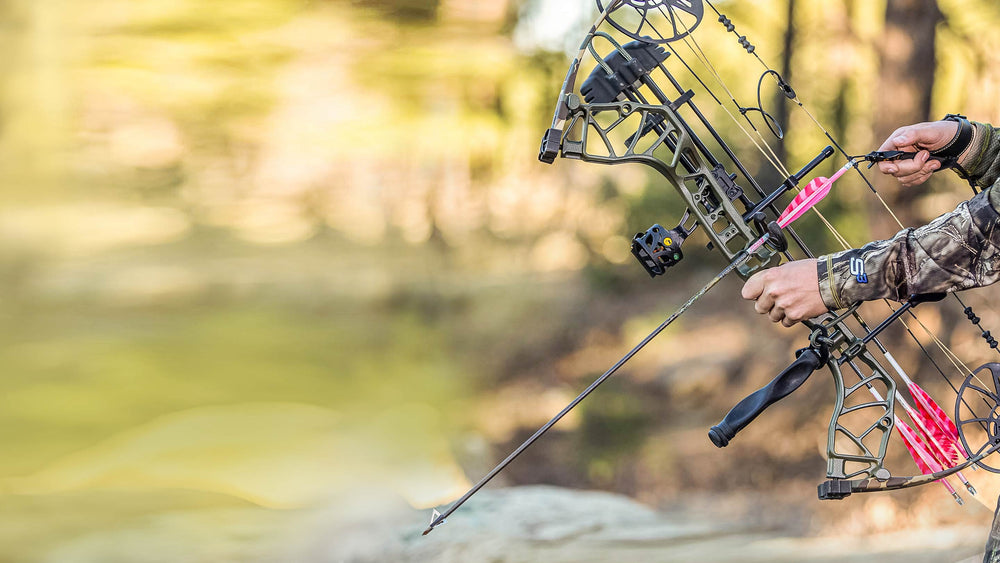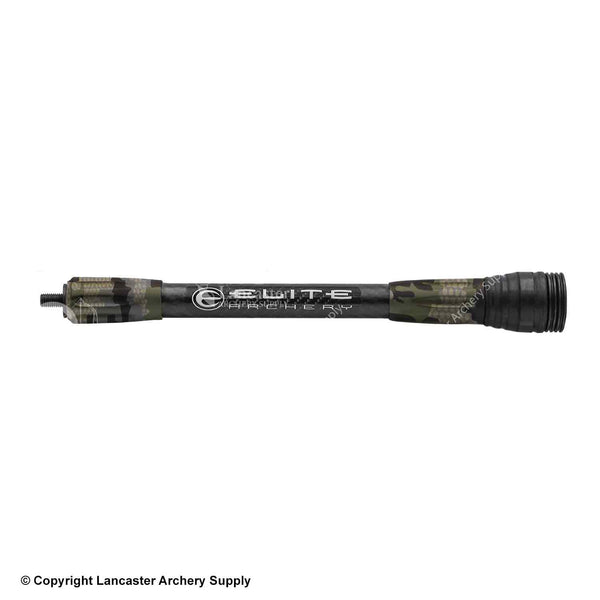Optimize Your Archery Accuracy With These Bow Stabilizer Strategies
In the realm of archery, accomplishing optimum precision is a pursuit that demands careful attention to information and method. One important aspect that can considerably influence your efficiency is the appropriate use of bow stabilizers. These often-overlooked accessories hold the possible to elevate your shooting efficiency to brand-new heights, yet only if used correctly. By exploring the nuanced methods of picking, setting up, and fine-tuning bow stabilizers, archers can open a realm of precision that might have previously eluded them. Whether you are a seasoned archer looking to improve your abilities or a newbie anxious to enhance your accuracy, mastering these bow stabilizer techniques could be the secret to hitting your mark with unequaled uniformity.
Benefits of Making Use Of Bow Stabilizers
Making use of bow stabilizers can considerably improve an archer's accuracy and overall efficiency by minimizing bow torque and vibration. Bow torque, brought on by the unequal circulation of weight in the bow, can cause inconsistencies in shot positioning. By affixing a bow stabilizer, the weight is redistributed, decreasing the results of torque and assisting the archer achieve a much more consistent shot. Additionally, bow stabilizers wet resonance, which not only boosts the convenience of shooting but additionally stops the bow from leaping upon launch, therefore helping in maintaining proper goal.
Additionally, bow stabilizers can aid in holding the bow stable, specifically throughout gusty problems or when firing from longer ranges. The added weight at the front of the bow provides stability and equilibrium, enabling the archer to concentrate on intending without the distraction of bow movement. Overall, the advantages of making use of bow stabilizers prolong past just precision, enhancing the archer's experience and efficiency in numerous shooting situations.
Selecting the Right Bow Stabilizer
Picking the proper bow stabilizer is vital for maximizing your archery devices and improving shooting performance. When selecting a bow stabilizer, there are numerous variables to consider to ensure you discover the ideal suitable for your demands. Firstly, think about the weight of the stabilizer. Much heavier stabilizers can help in reducing bow torque and soak up even more vibration, resulting in a steadier objective. Lighter stabilizers provide even more maneuverability, which can be useful in certain shooting situations.

Lastly, think about the layout of the stabilizer. Some stabilizers come with flexible weights or dampeners that permit you to customize the balance and feeling of your bow. Eventually, selecting the right bow stabilizer includes finding a balance between weight, size, product, and design to boost your capturing accuracy and overall performance.
Appropriate Setup Strategies
To ensure optimal performance and security in archery, grasping correct installment strategies for your bow stabilizer is important. The very first step in setting up a bow stabilizer is to determine the right positioning on your bow. The majority of stabilizers are connected to the front of the riser, listed below the grasp, to aid counterbalance the weight of devices such as quivers and views. Make certain that the stabilizer is not conflicting with various other parts or impeding your capturing type.
Next, firmly affix the stabilizer to the bow utilizing the suitable mounting hardware. It is crucial to tighten up the stabilizer comfortably to avoid any type of wobbling throughout shots. Some stabilizers include adjustable weights that can be added or gotten rid of to adjust the balance of your bow. Experiment with various weight setups to find the optimum equilibrium that suits your shooting design.

Adjusting Stabilizer Weight and Length
After making sure the correct installation of your bow stabilizer, the next step includes changing the weight and size to maximize its efficiency in enhancing archery accuracy. The weight of the stabilizer plays an important function in decreasing bow activity throughout the shot cycle. Including weight to the stabilizer can aid improve and dampen vibrations stability, resulting in more precise and constant shots. On the other hand, decreasing the weight can enhance maneuverability, which is useful for circumstances needing quick target purchase.
When it concerns stabilizer length, locating the appropriate equilibrium click for more is essential. A longer stabilizer can offer greater security by boosting the distance between the bow and the weight at the end of the stabilizer. This included range enhances the stabilizing result, particularly in windy problems or when contending longer distances. Conversely, a much shorter stabilizer provides more ability to move and might be chosen by archers that value dexterity and quick activities during capturing.
Advanced Stabilizer Tuning Tips
Accomplishing optimal bow security and accuracy in archery demands a nuanced approach to sophisticated stabilizer adjusting. Advanced stabilizer tuning entails fine-tuning different parts to improve the bow's equilibrium, reduce resonance, and improve general precision. One essential strategy is to try out various stabilizer resource configurations, including back-bar and side-bar setups, to discover the perfect equilibrium between stability and ability to move for your capturing style. bow stabilizer. Furthermore, readjusting the angle and positioning of the stabilizer can have a significant effect on how the bow reacts upon launch.
An additional essential element of sophisticated stabilizer adjusting is maximizing the damping residential or commercial properties of the stabilizer system. This can be accomplished by including added wetting accessories such as rubber dampeners or harmonic stabilizers to further decrease vibration and noise. Discovering various products for the stabilizer building, such as carbon fiber or light weight aluminum, can likewise influence the bow's performance by altering its weight distribution and stiffness. By meticulously fine-tuning these advanced stabilizer elements, archers can optimize their precision and uniformity on the variety or in competition.
Verdict
Finally, making best use of archery precision can be accomplished through the correct choice, installation, and change of bow stabilizers. By comprehending the benefits of making use of stabilizers, selecting the best one, and adjust its weight and size, archers can enhance their capturing precision. Using sophisticated tuning strategies can even more improve security and consistency in arrowhead flight. On the whole, integrating bow stabilizers right into archery method can lead to enhanced performance and boosted accuracy.
Utilizing bow stabilizers can considerably boost an archer's precision and overall efficiency by reducing bow torque and resonance. Longer stabilizers give higher security and equilibrium, specifically for long-distance shooting, while much shorter stabilizers offer more convenience and are simpler to steer in limited spaces (bow stabilizer). Carbon fiber stabilizers are durable and lightweight, while light weight aluminum stabilizers are durable and provide outstanding resonance wetting
A longer stabilizer can provide greater stability by boosting the range in between the bow and the weight at the end of the stabilizer.Another essential element of innovative stabilizer adjusting is maximizing the damping homes of the stabilizer system.